There was a civilisation on the Balearic Island of Menorca which built strange stone constructions known as talayots, taulas or navetas throughout the 1st millennium B.C. It is fairly easy to follow a route around the island to visit these wonders. A good starting point would be the Biniai Nou megalithic tomb. The Me-1 road linking the cities of Mahon and Ciutadella is the central backbone that crosses Menorca from one end to the other. Five kilometres from Mahon, a trail to the right leads to two hypogeal that give rise to the monument. The oldest human remains in Menorca were found here (2300-2200 B.C.).
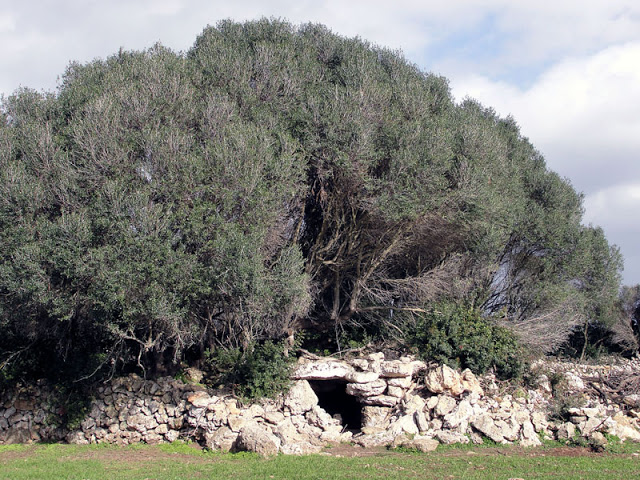
Returning to the Me-1, you can head back 1 kilometre to the turn-off for the town of Talatí de Dalt. The highlights here are the monumental taula and several megalithic caves. Next is the Calescoves necropolis, located around 8 kilometres away on the southern coast, in two rocky coves which were a jetty in the Roman and Byzantine periods (towards the 6th century A.D.) here there is a set of one hundred caves that were used as a burial ground.
Not so far away is So na Cassana, where we can find the ruins of a religious complex and, along the same road around 2 kilometres down, is the Talayotic settlement of Torralba d’en Salort with its splendid megalithic monuments, several talayot, a hypostyle hall and numerous caves.
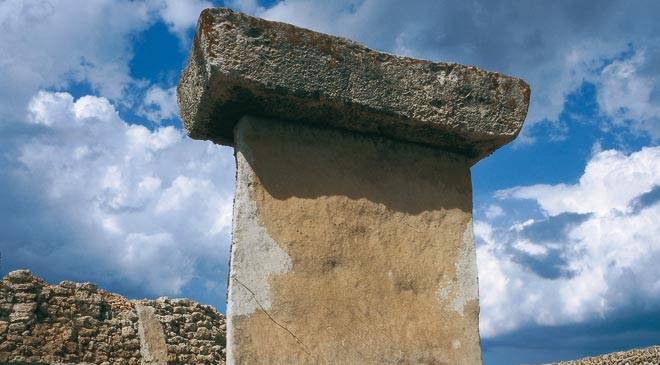
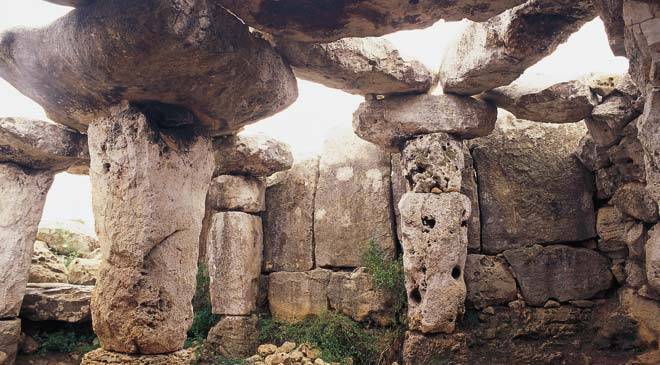
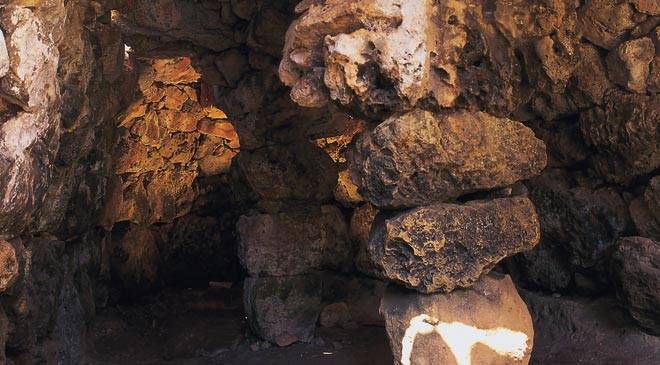
If you continue on, you will come across the town of Alaior. It is worth making a stop here to visit the picturesque nooks and streets with their traditional white limestone Menorcan houses. Next we take the Son Bou road and, after the Galmés Tower, there are a further two monuments.
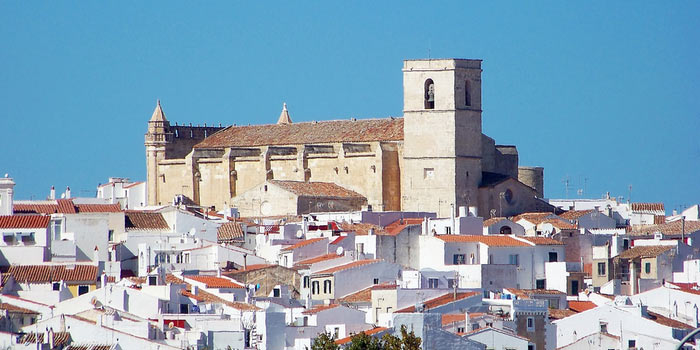
These are the megalithic tomb of Ses Roques Llises and, the most important site, the Talayotic settlement of Torre d’en Galmés, the largest on all the Balearic Islands where we get a better view of what these types of settlements were like.
From here we head into the heart of the island, still on the Me-1. Forests and farmland, which use the traditional dry stone walls for separation, line the route.
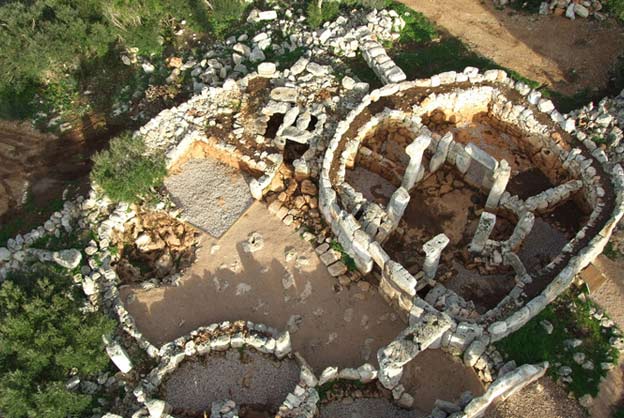
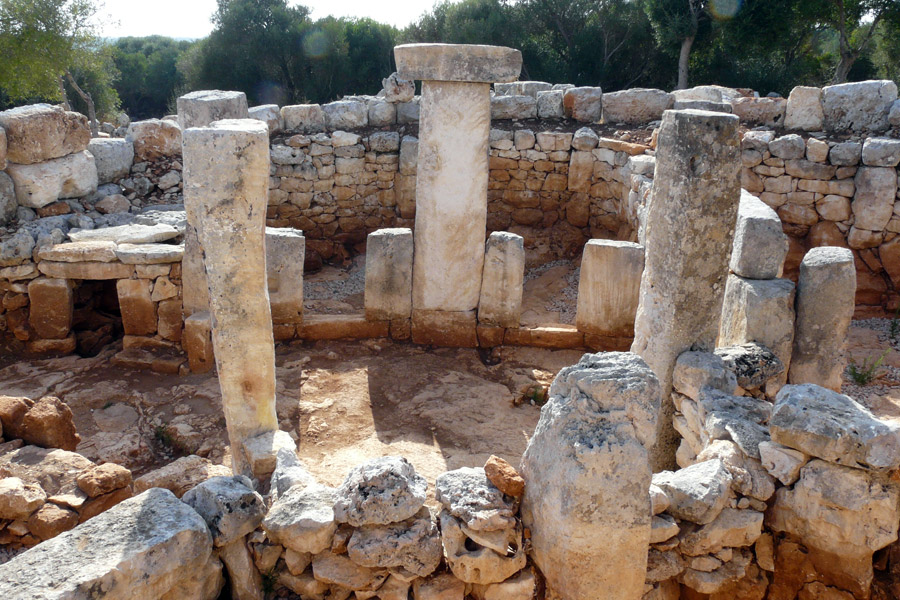
We head through the towns of Es Mercadal (7.5 kilometres), located alongside the Mare de Déu de Toro mountain and shrine, the highest peak in Menorca, and Ferreries (7 kilometres). Here we need to take the road to Es Migjorn Gran to shortly afterwards take the turn-off leading to the Talayotic settlement of Son Mercer de Baix (3 km). The examples of navetas still standing are magnificent.
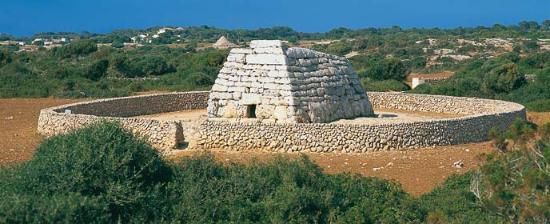
The next stop is the Naveta des Tudons, a splendid funereal monument and one of the best preserved and most visited on the island. To get here, we need to return again to the Me-1. At kilometre 40 (5 km after Ferreries), a 1-km deviation on the left leads directly there.
Finally, and after getting to Ciutadella on the western coast of the island, the Son Saura road leads you to the Talayotic settlement of Son Catlar around 6 kilometres on, which stands out for its large 800-metre long wall.